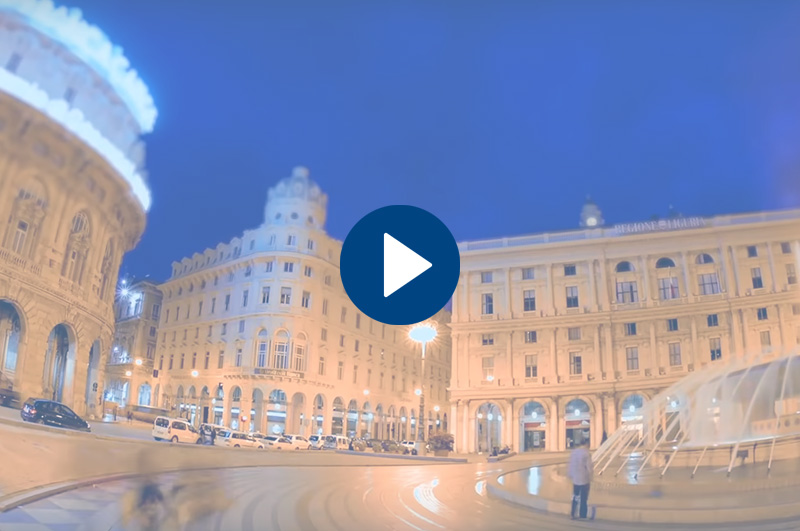12-day AUTHENTIC ITALY PRIVATE TOUR NORTH
The Northern Lakes, Emilia, Florence, Tuscany, Umbria
HIGHLIGHTS
- Lake Maggiore, where art and nature come together in perfection
- Lake Como, a scenery for movie lovers
- Parma, where Food is an art
- Maranello, the legend of Ferrari was born here
- Florence, an open-air museum
- Chianti, winemakers for 800 years
- Val d'Orcia, where Man and Nature blend with harmony
- Assisi, the extraordinary land of Francis
- Umbria, the freen heart of Italy
- Orvieto, the "city on the rocks"
- Tivoli, an invitation from the Emperor
WHAT'S INCLUDED:
Accommodations in Double Room with Continental Breakfast (*):
- Day 1: 3* to 5* Hotel in Lake Como area
- Days 2 & 3: 3* to 5* Hotel in Parma area
- Days 4 & 5: 3* to 5* Hotel in Chianti area
- Days 6 & 7: 3* to 5* Hotel in Val d’Orcia area
- Days 8 & 9: 3* to 5* Hotel in Assisi city centre
- Day 10 & 11: 3* to 5* Hotel in Orvieto city centre
- Day 12: 3* to 5* Hotel in Rome city centre
(*) The Hotel list is available upon request
Transfers (**):
- Day 2: Transfer to your accommodation in Parma area
- Day 4: Transfer to your accommodation in Chianti area – Stopovers in Modena and Maranello
- Day 6: Transfer to your accommodation in Val d’Orcia area
- Day 8: Transfer to your accommodation in Assisi
- Day 10: Transfer to your accommodation in Orvieto - Stopovers in Spoleto and Deruta
(**) All transfers by private Sedan (2 pax ) / Minivan (3 to 6 pax) / Minibus (7 to 10 pax)
Private Guided Visits / Tours / Activities (***):
- Day 1: Full-day excursion to Lake Maggiore - Drop off at your accommodation in Lake Como area
- Day 2: Half-day boat tour along the western coast of Lake Como with an Authorised Tourist Guide
- Day 3: Full-day excursion of Parma area with an Authorised Tourist Guide- Visits to a Parmesan Cheese factory, a Parma ham factory and a Cooking Class in a Parmesan Villa
- Day 4: Visit of a Traditional Balsamic Vinegar of Modena Producer with tastings
- Day 5: Full-day excursion of Chianti area - Visit of a local wine cellars with tastings
- Day 6: Full-day excursion to Volterra and Chiusdino - Visit of an Alabaster laboratory in Volterra - Drop off at your accommodation in Val d’Orcia area
- Day 7: Full-day excursion by private minivan to Val d’Orcia area - 3-hour private walking tour of Montepulciano city centre with a Sommelier Guide, with tastings of Vino Nobile, Pecorino cheese and truffle - Visit of a Supertuscan Brunello di Montalcino wine cellar with tastings
- Day 8: 2-hour private walking tour of Assisi city centre with an Authorised Tourist Guide
- Day 9: Half-day excursion to Assisi area - Visit of a Truffle farm, truffle hunting and lunc
- Day 11: 2-hour private walking tour of Orvieto city centre with an Authorised Tourist Guide - Half-day excursion to Civita di Bagnoregio
- Day 12: Full-day excursion to Tivoli with an Authorised Tourist Guide - Drop off at your accommodation in Rome
(***) All tours by private Sedan (2 pax ) / Minivan (3 to 6 pax) / Minibus (7 to 10 pax)
Admission Tickets to:
- Isola Bella and Isola Madre in Lake Maggiore (including the public ferry to the islands)
- Villa Balbianello OR Villa Carlotta in Lake Como
- Museo Ferrari in Maranello
- Abbazia di San Galgano in Chiusdino
- Duomo Cathedral in Orvieto
- Hadrian’s Villa and Villa d’Este in Tivoli
Full emergency assistance 24 hours/day by our Back Office
List of recommended restaurants and deli shops along the itinerary
All taxes
- Pick-up at Milan Malpensa Airport / Milan Railway Station
- Accommodation in Milan city centre the night before the beginning of the tour
- Visit of a local olive oil mill with tasting in Chianti
- Drop off at Rome FCO Airport / Rome Railway Station
- Other options upon request
DAY 1 – LAKE MAGGIORE
Benvenuti in Italia, welcome to Italy!
It has the magnificent vintage air of old-fashioned vacations but never goes out of style. Lake Maggiore is the second largest in Italy in size (the biggest is Lake Garda) but the largest—that’s why it’s called Maggiore—of the lakes closest to the Alps. Geographically, it straddles two Italian regions, Lombardy and Piedmont, and a small part juts into Switzerland’s Canton Ticino.
Since the 19th century, Lake Maggiore has been a top vacation and weekend destination for wealthy families from big cities, who built some of Northern Italy’s most stunning villas on its shores. The secret of Lake Maggiore’s success is its position just under Mount Rosa, a varied landscape, easy accessibility from both Milan and Piedmont, and a climate that allows very distinctive vegetation to thrive. The blossoming of azaleas, rhododendrons, camellias, lemons and magnolias in spring rightfully attract plant lovers.
The jewels of the lake are the Borromean Islands: anyone who has seen a postcard of Lake Maggiore is familiar with their outline. The archipelago is one of the biggest attractions for travellers, and Isola Bella, Isola Madre and Isola dei Pescatori have plenty of charm. The archipelago is named after the Borromeo family, which acquired the islands in the 14th century and still owns two. The noble palaces on the islands, with their rooms filled with antique furniture, paintings and priceless porcelain, and the enchanting gardens are open to visitors and are a must on your list of things to see.
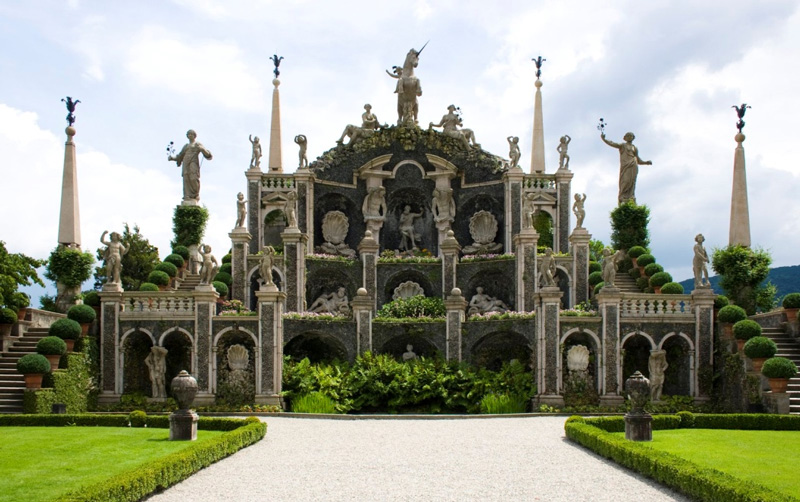
DAY 2 - LAKE COMO
The magnificent scenery of Lake Como (also known as “Lario”) has enchanted artists and travellers for centuries: from French novelist Flaubert to musicians of the calibre of Gioacchino Rossini, Giuseppe Verdi, and Vincenzo Bellini; it was here that he composed his opera Norma. Today Lake Como continues to attract members of the international jet-set and celebrities who appreciate the Lake's evocative beauty and surroundings.
The Lake (one of Lombardy's several incomparable lakes) is of a characteristic upside-down Y-form. The town of Como is situated on its southwestern arm, Lecco on the southeastern arm, and Colico on that northern. From the Lake’s shores, one can enjoy multiple fascinating views: suggestive “Borghi”, splendid villas and lush gardens await visitors searching for charm and relaxation or a little culture and contact with nature.
Breathtaking villas, one after the other, encircle the lake, a resort destination of the nobles of Lombardy since the 16th century. Cernobbio is the site of Villa d’Este(1600s), the location of Alfred Hitchcock’s celebrated film The Pleasure Garden”, and of Villa Erba, one of the most important Italian lake villas from the 1800s - today it is an internationally-known convention and expository complex. In the nearby Lenno, you will not miss Villa Balbianello, where “Star Wars: Episode II” and James Bond’s “Casino Royale” were shot. You’ll be amazed by its gardens, a perfect scenery for movie lovers.
Along the coast is Tremezzo, famous for its Villa Carlotta, with terrace gardens and a museum boasting works by Canova, Thorvaldsen, and Hayez. It was built in the 17th century for a powerful Milanese family. In the second half of the 19th century, Princess Marianne of Nassau bought the villa and gave it to her daughter Carlotta as a wedding present, hence the name. Her husband was a keen botanist and, over the years, turned it into the lush garden we see today.
Where the Lake’s three arms meet, you will visit Bellagio and Villa Melzi. The Villa, built in 1808, is much sought-after for its botanical park, with sculptures and a garden renowned for its beautiful azaleas and rhododendrons.
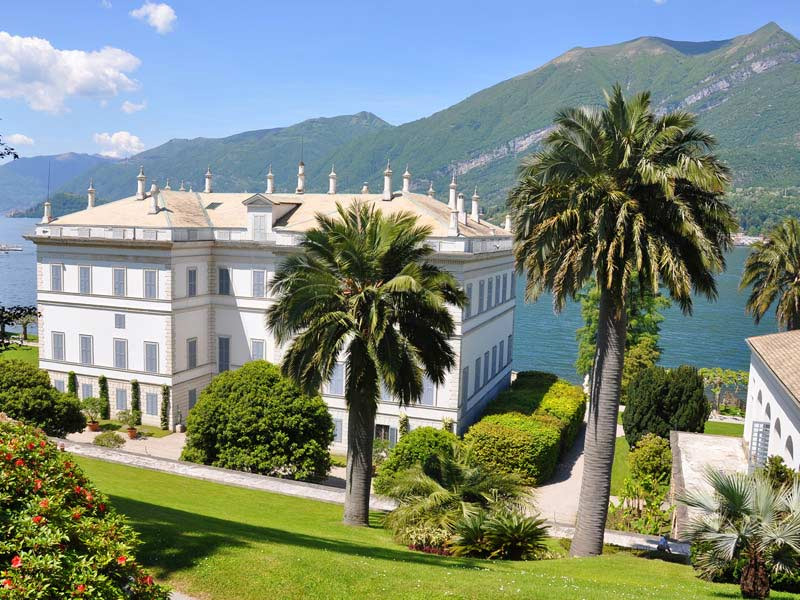
DAY 3 - PARMA
Your next destination is called “The Capital of Food”, and this is a well-deserved denomination, as Parma is known worldwide for its delicious food products.
Parma is known for its delicious food products. First, you will visit a Parmigiano Reggiano factory, where you will see cheese masters at work: an extraordinary way to get into the area's production culture and discover how a true gastronomic gem is made (more about Parmesan cheese in our BLOG).
Later on, visit a Parma ham factory, where you will learn the secrets of the most delicious ham, Prosciutto di Parma (to know more about raw ham in Italy, read the article in our the BLOG)
And finally, you may savour authentic Italian cuisine in a fun-filled cooking class led by a local “rezdora” (a female cook in the Parmesan language). Immerse yourself into the tradition of fresh Italian pasta and study the secrets of preparing pasta dough from scratch, using just flour and eggs. You will make your own “Tortelli d'erbetta” (Parma's most traditional pasta with a filling of ricotta cheese and chards) and delicious tagliatelle with tomato sauce – all local ingredients! Once your fantastic meal is ready, you will enjoy what you prepared, matched with a glass of local Lambrusco wine. A very tasty experience at the end of an unforgettable day!
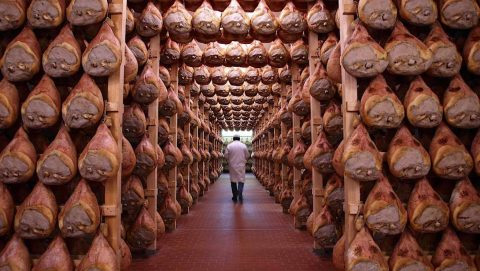
DAY 4 - MODENA
Modena is renowned worldwide for the famous people - Enzo Ferrari and Luciano Pavarotti above all - who were born and lived here, and for some of its gastronomical products. The city is the capital of the so-called “Motor Valley”: actually, the factories of the famous Italian sports car makers Ferrari, De Tomaso, Lamborghini and Maserati are located here.
The city of Modena hosts little jewels of art, such as the Romanesque Cathedral, wholly constructed with white marble and located in the heart of Modena, in Piazza Grande. The Piazza with the Cathedral and the Ghirlandina Tower is one of the 48 Italian sites on the UNESCO World Heritage List. The Ghirlandina, the bell tower rising majestically over the rooftops, derives from its marble balustrades around the steeple, suggesting the lightness of garlands.
In Maranello, you may visit Museo Ferrari, not just a collection of the past but an extraordinary experience of the world of Ferrari and sports car racing! How exciting to see the most beautiful cars in the world, exceptional artworks made by modern mechanic artisan masters.
Afterwards, you will move to the estate of a Balsamic Vinegar of Modena Producer, to delight in the unique, enticing taste of traditional balsamic vinegar. Balsamic Vinegar of Modena is obtained from partially fermented, cooked and concentrated grape must. The grapes come exclusively from the area's vines, and the most critical processing phase is refinement inside containers of fine wood, such as oak, chestnut, oak, mulberry and juniper. Want to know more about this unique delicacy? Read the article in our BLOG.
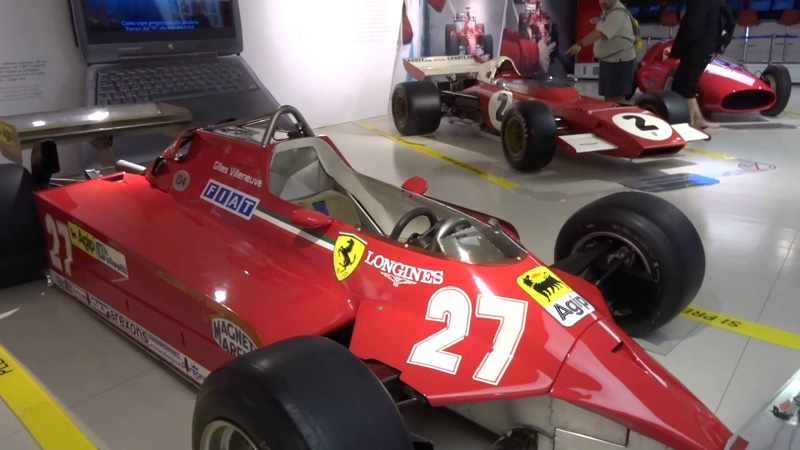
DAY 5 – CHIANTI
Today you will wander around Chianti, home of the world-famous wine!
Only a few regions can offer such a beautiful and rich panorama as Chianti: green hills sketched by miles and miles of vineyards and olive groves, ancient walled villages, panoramic curvy roads. Chianti Classico area spreads from Florence to Siena and includes the municipalities of Greve, Panzano, Radda, Gaiole and Castellina. Most of the route consists of the grid of roads connecting the larger towns to villages and castles, like the one leading to Radda, former headquarters of the Chianti Military League, and then to Castello di Brolio where Bettino Ricasoli devised the “recipe” for Chianti wine.
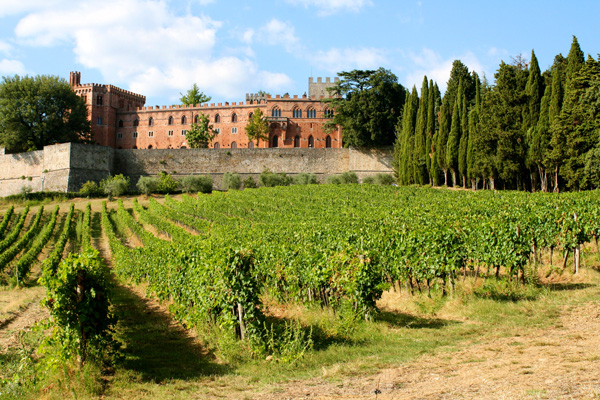
DAY 6 – CHIUSDINO AND VOLTERRA
Finally, you will visit Volterra, Tuscany’s oldest continuously-inhabited town, with settlements documented since 1,500 B.C. Volterra has an unmistakable Medieval character, where the atmosphere of an ancient village can still be felt and whose authenticity is protected by the relative isolation that has limited the development of the city centre in the industrial era, safeguarding the city from urban speculation. Here you will see Piazza dei Priori, the main square, the centre of civic power since the 8th century, Porta all'Arco, the 4th century B.C. Etruscan gate to the city walls, its 12th-century Cathedral and the ruins of the Roman Theater (40 B.C.) and the Roman Baths (3rd century AD).
Alabaster is a soft stone, much easier to work than marble, which is far harder. This malleability makes it perfect for carving small sculptures and richly detailed ornamental motifs. Historically, alabaster was used to carve the human face. More than 2,000 years have passed since the Etruscans first began carving alabaster, but it is still crafted today in the hilltop town of Volterra. Although it no longer represents a significant part of the local economy, it is nonetheless a fundamental part of the town’s culture. In the city, you will visit a laboratory and find beautiful shops selling artefacts and handmade unique pieces carved into this semi-transparent stone.
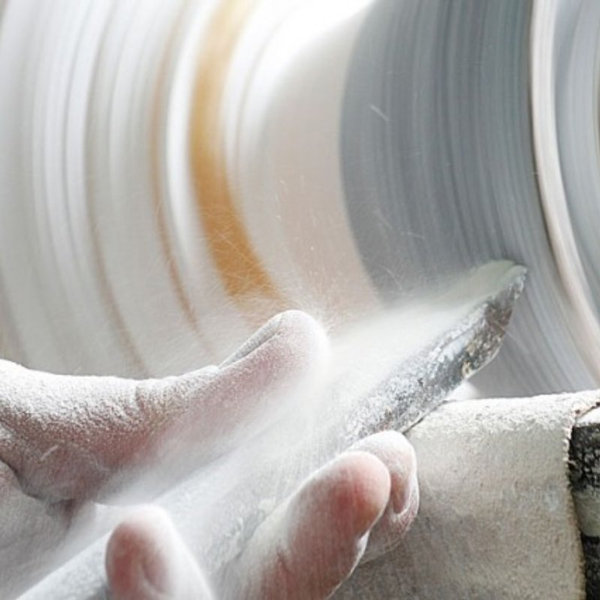
DAY 7 – VAL D'ORCIA
Val d’Orcia is one of the most fascinating places in Italy, included by UNESCO in the list of World Heritage Sites. Its landscape is a part of the agricultural hinterland of Siena, redrawn and developed when it was integrated into the city-state's territory in the 14th and 15th centuries to reflect an idealized model of good governance and create an aesthetically pleasing picture. The landscape’s distinctive aesthetics, flat chalk plains with almost conical hills and fortified settlements on top, inspired many artists. Their images have come to exemplify the beauty of well-managed Renaissance agricultural landscapes.
Your first stop will be in Pienza, “Pio’s town”: here, Pope Pius II decided to build the perfect palazzo for his papal court according to the project of an “Ideal City" drawn up by artists such as Piero della Francesca. From the loggia of the Palace, you will enjoy a breath-taking panorama of the valley. Pienza is also the area of the typical “Pecorino di fossa” cheese, an absolute delight to the palate!
In Montepulciano, our friend Francesca will lead you to discover this beautiful town full of stories, legends and thousand flavours, introducing you to the excellent products of this unique land: olive oil, pecorino cheese and Vino Nobile di Montepulciano.
Then, you will get to Montalcino, one of the prettiest hill towns in Tuscany. Around the village, rows of olive trees, precious grapevines and yellow fields create an enchanting landscape. Here you may visit a Brunello winery to taste the most famous SupertuscanSupertuscan wine, probably the best Italian red!
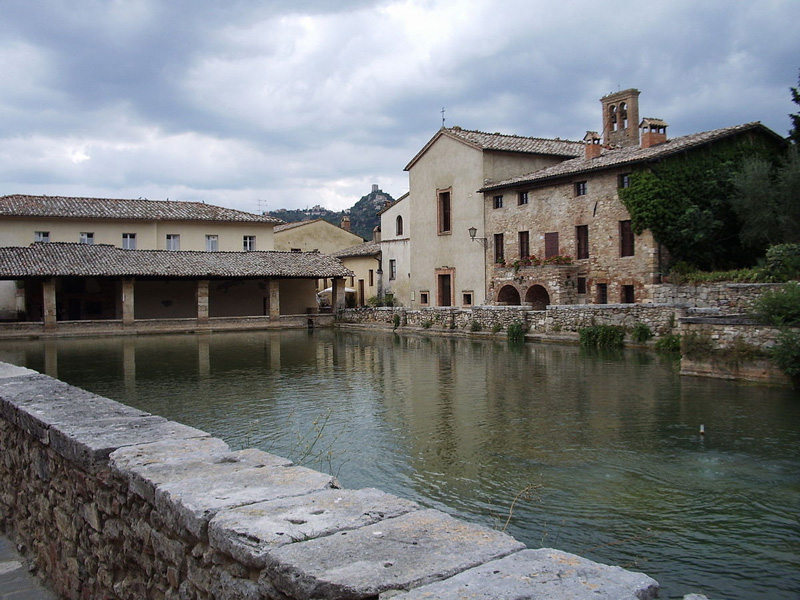
DAY 8 – ASSISI
Assisi is the birthplace of Francis, the nobleman who renounced all his possessions to devote his life to helping the needy and became the most acclaimed Saint of the Catholic Church.
The splendid Basilica, one of the emblems of Christianity, located on Mount Subasio and overlooking the entire valley, is dedicated to him. Apart from being a strong appeal to millions of religious believers, the Basilica is a monument of great artistic value. The construction of the Basilica began two years after his death, in 1228, and between the end of the 13th and the beginning of the 14th century, the basilica's walls were frescoed by the best artists of that time: Giotto, Cimabue, Simone Martini and Pietro Lorenzetti. St. Francis' Basilica consists of two churches laid upon each other and a crypt containing the tomb of the Saint. The Lower Basilica presents a simple facade with a double front portal embellished with a rose window and a mosaic. The interior is decorated with frescoes by some of the most important painters from 1200 to 1300, from Cimabue to Giotto, from the Lorenzettis to Simone Martini.
In the Upper Basilica, you will admire the frescoes of the life of St. Francis, painted by Giotto, the stories of the Old and New Testament covering the entire nave, and other beautiful frescoes by Cimabue and Torriti.
Another figure who profoundly influenced these places is Saint Clare, to whom the homonymous Basilica -with a facade made of white and pink stone and divided into three sections by horizontal cornices - is dedicated. The interior frescoes and the remains of the Saint are visible through a window in the crypt.
Try to enjoy the mystical atmosphere of Assisi:
"Be praised, my Lord, through our sister Mother Earth,
Who feeds us and rules us,
And produces various fruits with coloured flowers and herbs."
(St. Francis, Prayer of the Canticle of the Creatures)

DAYS 9 & 10 – UMBRIA
Umbria is the greenest region of Italy, and its citizens are famous for their hospitality. This morning, our first stop will be Spoleto, a medieval hill town in the Umbria region, famous for its summer music festival, “Festival dei Due Mondi”.
Thick walls and a magnificent gorge surround the city, and fine medieval and Roman monuments sit along the streets. The Duomo is one of Spoleto's most pleasing sights: dating back to the 12th century, the cathedral is set against a backdrop of hills and valleys. The Rocca is high above the town, a Papal fortress used as a prison until the 1980s. A massive bridge, Ponte delle Torri, built in the 14th century, functioned as a bridge and aqueduct; we can walk on it for breath-taking views of the valley and gorge below.
We will have lunch in Spoleto; you can try a typical Spoleto food,“torta al testo” (bread prepared with water, flour, salt, pepper, and olive oil and cooked on a particular marble stone in a wood-burning oven); it is sometimes stuffed with ham, sausage, or simply with herbs prepared in olive oil.
Then, you’ll head for Deruta, famous for its splendid, brightly coloured maiolica. The production of ceramics in Deruta goes back to the 13th century. In those times, small “bottegas” produced objects of everyday use: jugs, bowls, and basins. Maiolica reached its apex in the 16th century, with artists making various motifs, such as mythological figures, battles and religious scenes.
In Deruta, you will visit a maiolica laboratory, discovering all the creative processes of the fascinating craftsmanship of ceramics, from the creation of models to the exit of the artefacts from the oven.
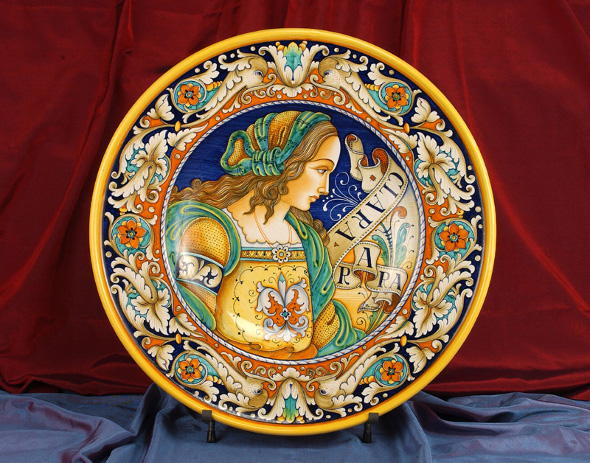
DAY 11 –ORVIETO
Orvieto in Umbria is perhaps the most beautiful hill town in Italy, perched up on a volcanic rock, its history dating back to the Etruscans.
Although just an hour from Rome, the architecture is different, with many of the buildings constructed out of “tufo”, a volcanic rock. Orvieto’s main attraction is its 14th-century Cathedral – a masterpiece of Gothic architecture with a glistening façade of stained glass, mosaics and sculptures. Another attraction is St. Patrick’s Well, a 62-meter-deep (203 feet) feat of engineering characterized by two spiral staircases that wind around the well (yet never meet), with 248 steps down to the water. A pleasant guided tour along a straightforward route makes it possible to know Orvieto’s underground world, created by its ancient inhabitants over about 2,500 years of uninterrupted digging. A tour at the discovery of a millenary, surprising and unexpected “Underground City”, you will surely enjoy it!
At lunch, don’t miss “salumi di cinghiale o cervo” (boar or deer sausage) and pecorino cheese and taste the region's prized white truffle oil together with the delicious white wine of the area, Orvieto Classico!
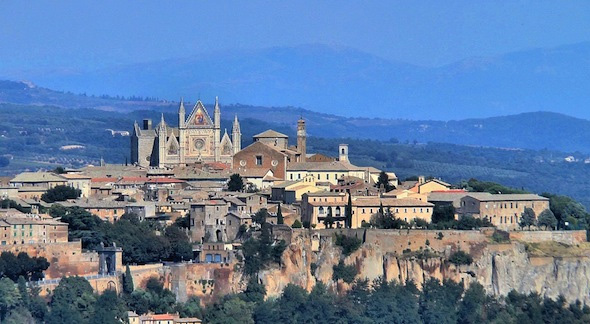
DAY 12 – TIVOLI
On your last day, you will discover one of Italy’s hidden gems! Here is Tivoli, a small town in Lazio, about 30 Km east of Rome. The first major sight is Hadrian’s Villa: Emperor Hadrian built it to escape the crowd and turmoil of the capital. Much of the enormous, luxurious ancient villa remains intact today, and you will be surprised by the clever application of Renaissance plumbing in the fountains and waterworks, perfectly integrated with the landscape. There are about 500 fountains here!
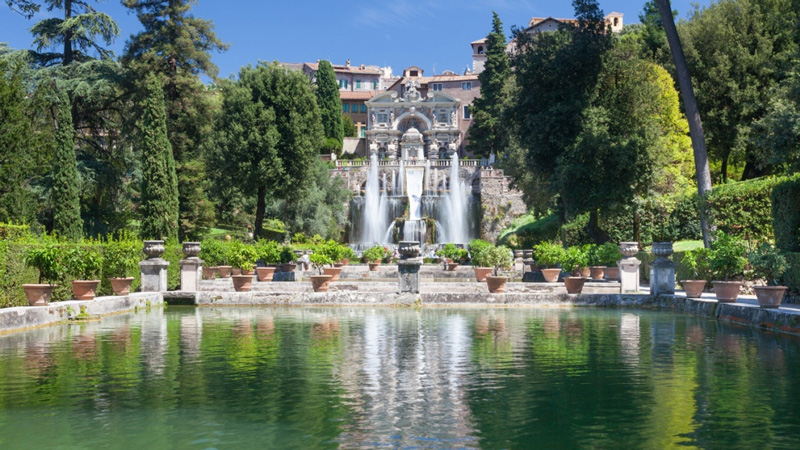
The other masterpiece in the area is Villa d’Este, the great Villa commissioned by Cardinal Ippolito of the Este family around 1560. Among the masterpieces of the Italian Renaissance that most inspired landscape architects and painters, it is an ideal reinterpretation - in a sumptuous way - of the hanging Eden of Babylon. The prestigious residence is surrounded by terraces, stairways and avenues set on each other, decorated with water games so audacious as to reveal considerable engineering skills. The monument was elected the most beautiful park in Europe, as well as UNESCO Heritage with the motivation: "one of the first gardens of wonders, which from the beginning had a decisive influence on the development of European landscape painting ».
Later in the afternoon you will check in at your accommodation in Rome.
The tour is over, but the memories of a fantastic journey will accompany you for a lifetime!
Arrivederci with another tour at the discovery of Italy with VITOR, Visit Italy on the Road.
